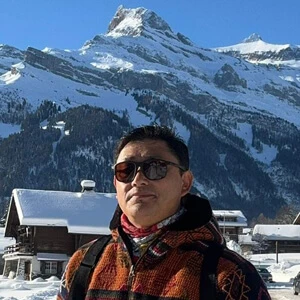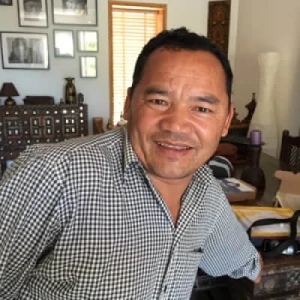The Everest three high passes trek is demanding but not too demanding. It presents a mini peak climbing-like experience, but it is not a climbing expedition!
The Everest three high passes trek takes backpacking in the Himalayas to the next level. It is a truly adventurous and challenging journey amidst deep valleys and tall mountains of the Khumbu region (Everest region). Trekkers get to test their endurance, push their limits, and conquer three mountain passes above 5,000 meters. The Everest 3 passes trek is one of our longest treks in Nepal, requiring 22 days.
If you are up for a challenging venture, then look no further than the Everest three high passes trek 22 days. You will explore Namche Bazaar, Thame Monastery, Gokyo Lakes, Everest Base Camp, Kala Patthar, and Tengboche Monastery on this trek while crossing the Renjo La, Cho La, and Kongma La passes. All these destinations are connected by these three passes.
Highlights
- A demanding and adventurous trek amidst the deep valleys and tall mountains of the Khumbu region
- Test your endurance, push your limits, and conquer the three high mountain passes above 5,000 meters
- Explore the Sherpa villages and their lifestyle while trekking
- Visit ancient monasteries along the way and get to know about the cultural heritage of the mountain communities
- Trek through dense forests and gradually ascend to glacier moraines
- Discover the stunning Gokyo Lakes and other alpine lakes and streams
- Hike to Everest Base Camp, the base of the tallest mountain in the world
- Cross the three high passes - Renjo La, Cho La, and Kongma La
- Enjoy acclimatization hikes to Khumjung Monastery, Gokyo Ri, and Kala Patthar
- Witness breathtaking mountain panoramas and diverse landscapes as you traverse different climatic zones
What to expect during the Everest 3 passes trek?
The Everest 3 passes trek is the most strenuous route in the Khumbu region. Trekkers explore beyond the mainstream EBC trail and touch the hidden, less visited parts of the region. You will enjoy offbeat trekking via remote Sherpa villages and glacier moraines.
The accommodation and meals on the Everest three high passes trekking are basic. You will get cozy and clean rooms to spend the nights, but the overall lodging experience will be very simple. Spring and autumn are the best times for the Everest three passes trek. Winter trek is also possible with proper preparation and planning.
The journey starts with a short Lukla flight that you will take either from Kathmandu or Ramechhap airports. In the starting few days of the expedition, follow rhododendron, pine, and oak-covered trails, crossing numerous suspension bridges on the way. The trail ascends and descends via diverse climatic zones.
The later part of the route is steep & offbeat and follows rugged high-altitude terrain. You will navigate glacier moraines and explore alpine lakes. Our Everest three high passes trek itinerary is designed to offer you ample time to enjoy the mountains and relax. You will travel with a professional crew who will take care of all the essentials.
Major attractions of the 3 passes trek in Nepal
The Everest three high passes trek 22 days is one of the best treks to witness the surreal beauty of the Khumbu region. It is an adventurous itinerary to the lap of the world's tallest mountain, Everest Base Camp. You will explore many hidden gems of the Khumbu region, including the Gokyo Lakes, Gokyo Ri, Ngozumpa Glacier, Thame monastery, Nangpa La Valley, Marlung village, etc.
Sherpas are one of the major highlights of the Everest three high passes trekking. Explore picturesque mountain villages and get to see the daily life and culture of Sherpas and other communities like Lama, Limbu, Rai, Bhotiya, etc. You will get to discover some of the oldest monasteries along the way, like Khumjung, Thame, Pangboche, and Tengboche.
Following our Everest 3 passes trek itinerary, you will get ample time to rest and recover. We have crafted the itinerary in a way to provide a perfect balance between adventure and relaxation to our trekkers. The diverse terrain presents various vegetation, landscapes, and environments. Enjoy the nature and wilderness of the region.
Mountains like Everest, Lhotse, Kanchenjunga, Cho Oyu, Makalu, Ama Dablam, Thamserku, Nuptse, Choltase, Pumori, Island Peak, and numerous others are seen throughout the trail. The interactions with the locals, their warm hospitality, and the tranquility of nature will make the journey a lifetime experience.
Who can do the Everest three high passes trek, and how to prepare?
The Everest three high passes trek is very challenging, so only recommended for trekkers with strong physical and mental fitness. Moreover, the participant must have previous trekking experience or any high-altitude expertise. If you meet these two requirements, then there is no age limit.
Before the trek starts, trekkers are advised to train themselves physically and mentally. Work on their stamina, improve core strength, and build endurance. Exercise, day hikes, and cardio activities are recommended. Likewise, arrange the trekking gear and educate yourself about the Everest three high passes trail by reading blogs and watching vlogs.
2024/2025 Everest three high passes trek bookings are open with Himalayak Trekking
We, Himalayak Trekking, are a 100% Nepali trekking company. We are based in Kathmandu and organize all of our trips throughout Nepal from here. Our team is spread all over the country, facilitating smooth and safe ventures for our guests. You will get a flexible itinerary, free airport pick-up and drop-off service as per the itinerary, and the best Everest three high passes trek cost with us.
Our Everest three high passes trek 2024 bookings are open. You can also book the trek for spring 2025 and start preparing early. Our easy booking system allows you to reserve any trek with us in Nepal without any hassle. You can customize the itinerary and add-ons to your package. For more information, contact us.
Trek safety and sustainable travel
We welcome groups, families, solo trekkers, students, etc. With us, you can travel freely and confidently in Nepal because our team will take care of all of your needs. You will have a fun and exciting time in the mountain trekking and mingling with the locals, as the guide will bridge the communication gap.
Likewise, all of our treks are eco-friendly. You will only leave your footprints behind. We exclusively work with locals and support and uplift the mountain community.








